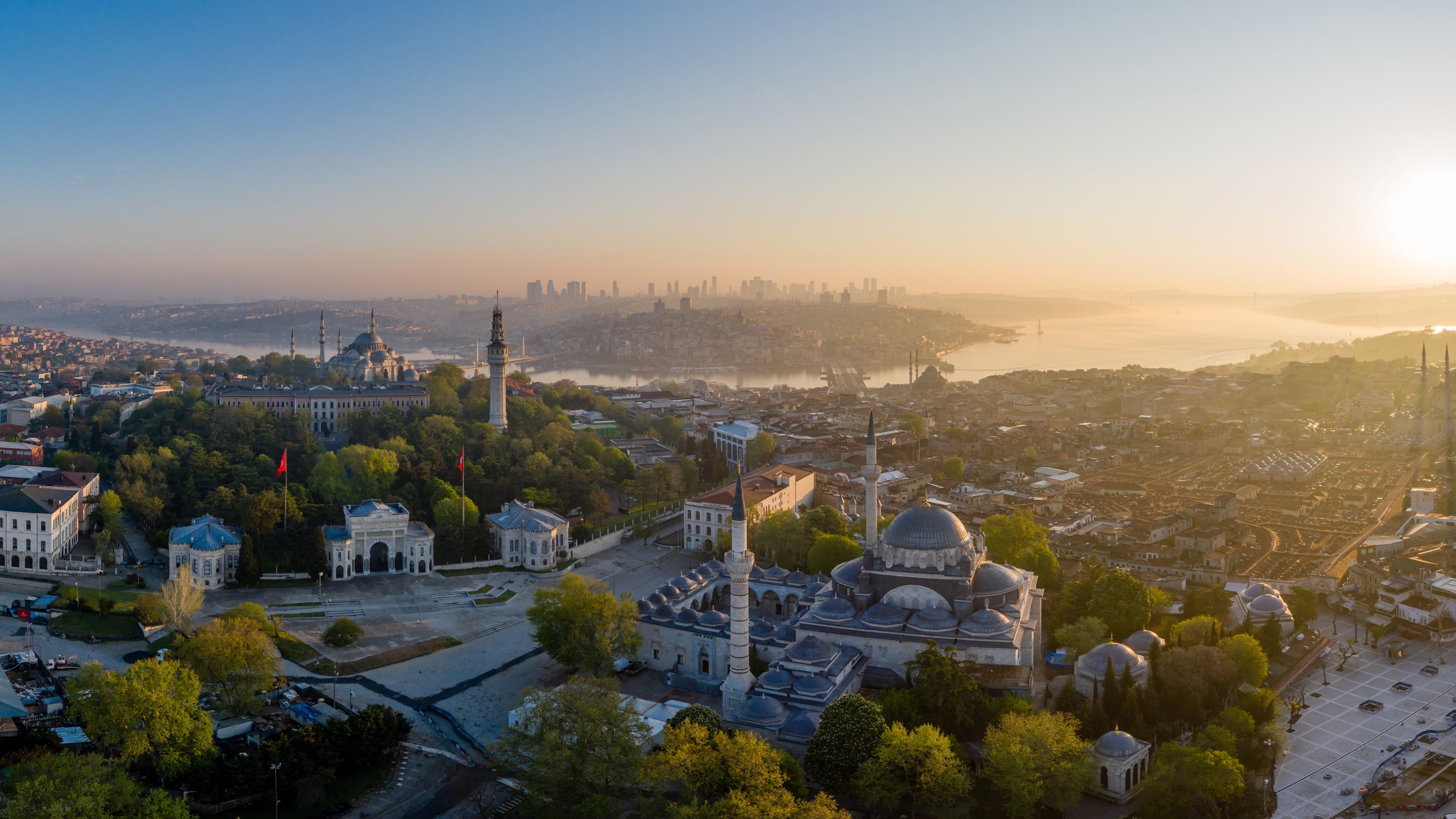
The deep-rooted history and splendid architecture of structures in the spacious Beyazıt Square make the place a landmark in the city
We have been away from the streets and had to cancel or postpone our travel plans for a while due to the coronavirus outbreak. Istanbul, one of the cities where historical tourism is the most vibrant, has also had its share of the pandemic-driven hitches. However, a revival can begin with vaccination, boosting hope for normalization.

Traces of Sultan Bayezid
A palace was built in the Beyazıt Square in the wake of the conquest of Istanbul (1453) since the imperial palace was in a miserable state due to both the Latin invasion and financial incapability. This palace was built so that the sultan had a place to reside until the imperial one was prepared. This very first Ottoman palace in the square was completed five years after the conquest in 1458. It was later referred to as the "Old Palace” after the construction of the imperial Topkapı Palace.
During the reign of Sultan Mehmed II, also known as Mehmed the Conqueror, (1451-1481) the city saw the construction of several architectural structures. These efforts were maintained and improved further by his son and successor Sultan Bayezid II (1481-1512), who took an eager interest in arts and architecture. After the long period of conquests during the reign of Sultan Mehmed II, his son attached even greater importance to reconstruction work.
With the construction of the mosque complex, the square became one of the most active places of sociocultural life during the Ottoman classical period. Due to the Bayezid Mosque and surrounding bazaars, inns and madrassas, the square was the most hectic venue in the city. It was cleaned and swept twice a month on orders.
The square was also one of the number-one places for public entertainment. Musicians, fortune tellers, animal charmers, jugglers and acrobats boosted the popularity of the square with their performances. German pastor Stephan Gerlach, who visited Istanbul with the Austrian Embassy delegation, describes such shows in detail in his memoirs titled "Turkey Diary.”
From mosque to sahaf
The most remarkable structure in the square is surely the mosque complex. It was designed as a center of services along with the structures around it. The free shelter was provided to the homeless in a section called "tabhane,” while free food was distributed in a place called "aşhane-imaret” in this structure.
The courtyard of the mosque, which has gates on three sides, is surrounded by domed porticos. There are windows in double rows in the outer walls of the courtyard. Famous Ottoman traveler Evliya Çelebi wrote that there were four cypress trees planted by Sultan Bayezid himself in this courtyard, but none of them have survived. The tomb of Sultan Bayezid is also in this courtyard.
The madrassa section of the mosque complex was one of the most important educational centers in the city. It seems like an independent building because it was built a little far away from the mosque. The building was rather dilapidated in the 1930s but went through a comprehensive repair in the 1940s and was turned into a municipal city library in 1943. After serving for 40 years, the library was moved and the building has been used as the Museum of Turkish Calligraphy Arts since 1984.
Among the surrounding structures that made the mosque complex a cultural center is Bayezid State Library, which is located right next to it and was the first library built by the state. Mostly, all libraries in the Ottoman state were considered foundation works and run with private financial support.
As you head from the mosque toward the Grand Bazaar, you see the Sahaflar Çarşısı, or bazaar of sahafs, the second-hand booksellers. Many famous intellectuals of recent history used to gather in this bazaar. In fact, as its name suggests, this was a place where old books were sold. But it has turned into shops selling new books today.
Famous gate
Although the famous gate opposite the mosque is known as the Bayezid entrance gate of Istanbul University, it was called "Bab-ı Seraskeri" (the Gate of Serasker) in the Ottoman era. "Serasker” is the title granted to the chief commander of the Ottoman land forces. This area, where the Old Palace was located, was allocated to military authorities after the construction of new palaces. In times of both peace and war, all military affairs were carried out by these authorities here.
Therefore, the middle part of the gate features the inscription "Daire-i Umur-ı Askeriyye” ("Military Affairs Department") in large letters. Also, the first and third verses of Surah Al-Fath, the 48th chapter of the Quran, are inscribed on the right side and left side, respectively. The first verse reads, "Indeed, We have granted you a clear triumph,” while the third verse reads, "And so that Allah will help you tremendously.”
Above the gate was a tughra or an official signature belonging to Sultan Abdülaziz. In 1933, however, it was covered along with many other places at that time. During restoration work to restore the structure to its original state in 2014, the marble cladding on the tughra was removed, and it was brought to light again.
